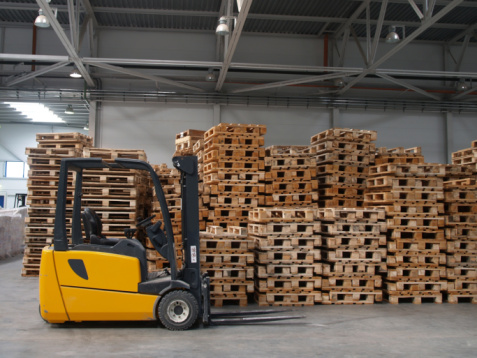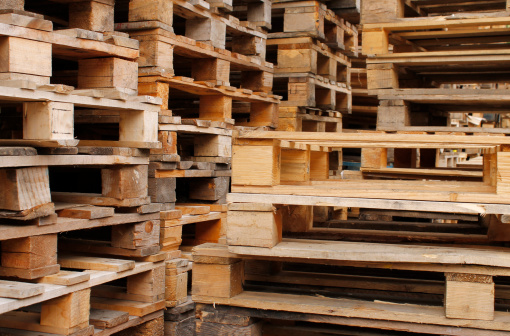Pallets are designed and built to sustain a tremendous amount of force. They safely support loads that can weigh thousands of pounds while being lifted via a forklift or pallet jack. The impacts and force of unit load movements eventually lead to the need to repair or replace a pallet. Wear and tear on pallets is inevitable, but there are a few ways that you can extend pallet life and prevent pallet failure. The majority of pallet damage results from careless handling. This is evident in the observations of pallet failure in actual warehouses, where the pallet components that fail first tend to be the top leadboards, the bottom leadboards and the bottom interior boards. Ensuring that a pallet is picked up correctly before it is moved is key to preventing this damage, and extending pallet life.
Three Tips to Prevent Pallet Damage
Hundreds of millions of pallets are moved around warehouses and in and out of shipping containers every day. Most pallets sustain damage consistent with improper handling that can be easily prevented. Workers who deal with pallets may lack the proper training or are just careless in the way they handle them. Here are three tips for proper pallet handling:
- Carefully align your forklift. When a forklift is inserted into a pallet, most of the time it starts off misaligned. The angled forks on the lift come into contact with the front leadboards first, and they sustain a large impact. The force from these impacts causes a lot of damage to the front leadboards, eventually resulting in the need to repair or replace them. The front leadboards are often the critical component of a pallet that eventually ends its life.
- Do no drag your pallets. Pallets are often times pushed or dragged across the floor instead of being picked up and moved. Dragging pallets across the floor creates friction between the pallet and the bottom leadboards that damages the component. In PDS simulations, the bottom leadboards tend to sustain the second most damage after the front leadboards.
- Insert your pallet jack completely. Pallet jacks are designed to go completely through pallets. Often times, however, they are not inserted completely and the wheels of the jacks hit the bottom interior boards, causing them to break off. Preventing this type of damage is simple; whenever you use pallet jacks, be sure that they are inserted correctly before proceeding.
Utilizing these three simple tips for handling pallets can prolong the life of your pallets by decreasing the severity of forces and impacts they sustain. Just a little bit of extra care can help keep your pallets from failing and inevitably reduce your pallet costs.





